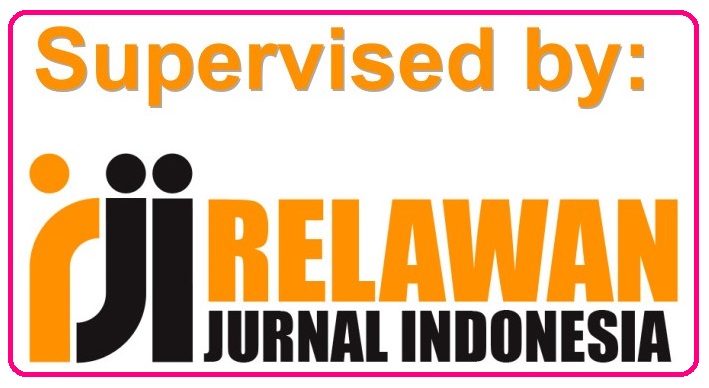Narrative Structures and Cultural Intersections: Exploring Malind Anim Folklore through Reader Responses
DOI:
https://doi.org/10.31849/elsya.v6i1.17754Keywords:
Indigenous community, Local culture, Malind Anim folklore, Narrative text, Reader responseAbstract
This study is a literary research that used a reader-response approach, which can open insights into the reader's view of a literary work, to find the results of literary receptions in the Folklore of Malind Anim, an indigenous community that inhabits the southern Papua region. The study of the people's stories of the Malind-Anim community is still minimal, so this research is expected to trigger community’s enthusiasm to know the culture that is reflected in the People's Stories of the Society of Malind-Anim and also to be the material of policy-determining consideration in the efforts to preserve the stories of the people of the Anim. Questionnaires are given to 20 readers before reading Malind Anim's People's Stories, containing items that measure the level of readers, then they were invited for a semi-structured interview after reading to see the readers' response to the values in the people's stories of the Malind-Anim community. The research was divided into two phases. First, a structural approach to the work of People's Stories of Malind Anim society, where the researchers used heuristic and hermeneutic methods to find structure and literary elements. In the second phase, to investigate the implications of the work on the reader, the reader response approach was used to extract literary values from the reader's point of view. Results show readers at the developing level can only interpret values in general, such as religion, education, and the environment, and readers at the developed level can interpret that the folklore of the Malind Anim community has three main dimensions that readers can interpret at these levels: Environmental Protector, Gender Equality, and Mitigation.
References
Aquino, Andre, C. B., Pagliarussi, & Marcelo, S. (2006). A Heuristic Method for Composing a Literature Review. SSRN Journal.
Baal, V. (1966). Dema: Description and Analysis Marind Anim Culture (South New Guinea).
Bell, A., Ensslin, A., van der Bom, I., & Smith, J. R. (2019). A reader response method is not just for 'you.' Language and Literature, 28, 241–262. https://api.semanticscholar.org/CorpusID:198714170
Burgess, D. J., & Williams, D. P. (2022). Rethinking crime fiction readers. Creative Industries Journal, 1–15. https://doi.org/10.1080/17510694.2022.2057063
Bush, H. K. (1994). Eric. Reading Research and Instruction, 33(4), 326–330. https://doi.org/10.1080/19388079409558165
Bygstad, T. M. (2019). Rick Riordan's Myth-based novels as a gateway to legitimizing fan fiction. 1–84. http://hdl.handle.net/1956/19846
Conradi Smith, K., & Jang, B. G. (2022). The Relationship Between a Reader's Self-Concept and Achievement: Which Aspect Matters the Most and for Whom? Reading & Writing Quarterly, 38(5), 454–468. https://doi.org/10.1080/10573569.2021.1972881
Cushing, I. (2018). 'Suddenly, I am part of the poem': texts as worlds, reader-response, and grammar in teaching poetry. English in Education, 52(1), 7–19. https://doi.org/10.1080/04250494.2018.1414398
Doche, A., & Ross, A. S. (2022). 'Here is my shameful confession. I don't really "get" poetry': discerning reader types in responses to Sylvia Plath's Ariel on Goodreads. Textual Practice, 1–21. https://doi.org/10.1080/0950236X.2022.2082516
Douglass, B., & Moustakas, C. (1985). Heuristic Inquiry. Journal of Humanistic Psychology, 25, 39–55. https://api.semanticscholar.org/CorpusID:144757110
Garzón, E., & Castañeda-Peña, H. (2015). Applying the Reader-Response Theory to Literary Texts in EFL-Pre-Service Teachers' Initial Education. English Language Teaching, 8, 187–198. https://api.semanticscholar.org/CorpusID:55454035
Ghimire, S. (2022). Animal Imagery in George Orwell's novel "Animal Farm." Journal of Balkumari College. https://api.semanticscholar.org/CorpusID:245775789
Grdešić, M. (2022). The woman reader in Rebecca Mead's My Life in Middlemarch. Cultural Studies, 36(5), 780–798. https://doi.org/10.1080/09502386.2021.2012708
Ihueze, O. A. (2015). Folklore in Literature: A Tool for Culture Preservation and Entertainment. 4(4), 57–61. www.ijhssi.org
Jabrohim. (2017). Teori Penelitian Sastra. Pustaka Pelajar.
Kelly, P. R., Farnan, N., & Richardson, J. J. (1996). Reader response: A way to help children with learning difficulties think about literature. Reading and Writing Quarterly, 12(2), 137–148. https://doi.org/10.1080/1057356960120203
Kuzmičová, A., & Cremin, T. (2022). Different fiction genres take children's memories to different places. Cambridge Journal of Education, 52(1), 37–53. https://doi.org/10.1080/0305764X.2021.1937523
Leach, M. (2020). Problems of Collecting Oral Literature. Publications of the Modern Language Association of America, 77(3).
Malo-Juvera, V. (2012). The effect of young adult literature on adolescents' rape myth acceptance. ProQuest Dissertations and Theses, 188. https://doi.org/10.25148/etd.FI12041115
Marnina, Zem Santo, & Arin Mantara Anggawirya. (2023). Pembinaan Anak-Anak Marind-Papua Putus Sekolah Belajar Bahasa Inggris Melalui Kursus Intensif Guna Membangun Budaya Literasi Berbasis Kearifan Lokal Di Kampung Matara, Distrik Semangga Merauke-Papua. ALFIHRIS : Jurnal Inspirasi Pendidikan, 1(1), 100–110. https://doi.org/10.59246/alfihris.v1i1.119
Mastropierro, L., & Conklin, K. (2019). Racism and dehumanization in Heart of Darkness and its Italian translations: A reader response analysis. Language and Literature, 28(4), 309–325. https://doi.org/10.1177/0963947019884450
Melendez, E., & Pritchard, R. H. (1985). Applying Schema Theory to Foreign Language Reading. Foreign Language Annals, 18, 399–403. https://api.semanticscholar.org/CorpusID:144700701
Moddelmog, D. A. (2014). The Oedipus Myth and Reader Response in Pynchon's The Crying of Lot 49. Papers on Language and Literature, 50(3/4), 298–310. https://www.proquest.com/scholarly-journals/oedipus-myth-reader-response-pynchons-crying-lot/docview/1647398269/se-2?accountid=210392
Naaeke, A. (2005). The Cultural Relevance of Myth: A Reader-Response Analysis of the Bagre Myth with Reference to the Role and Place of Women in the Dagaaba Society. Journal of Dagaare Studies, 5.
Ogden, B. H. (2022). A Psychoanalytic Perspective On Reading Literature: Reading The Reader. The International Journal of Psychoanalysis, 103(1), 236–240. https://doi.org/10.1080/00207578.2021.2007774
Pantaleo, S. (2021). Student Meaning-Making of the Artwork in a Science Trade Book: An Interdisciplinary Opportunity for Developing Visual Literacy. Literacy Research and Instruction, 60(4), 332–351. https://doi.org/10.1080/19388071.2020.1854906
Snow, C. E. (2010). Reading Comprehension: Reading for Learning. https://api.semanticscholar.org/CorpusID:59681422
Stinson, E., & Driscoll, B. (2022). Difficult literature on Goodreads: reading Alexis Wright's The Swan Book. Textual Practice, 36(1), 94–115. https://doi.org/10.1080/0950236X.2020.1786718
Thomas, M. (2019). "I Solemnly Swear that I Am up to No Good": Mapping My Way through TESOL Teacher Education. Studying Teacher Education, 15, 82–92. https://api.semanticscholar.org/CorpusID:150902267
Warman, B. (2015). Beasts and Bluebeards : Reader Reception , The Fairy Tale and Jane Eyre. 1(1).
Whiteley, S., & Canning, P. (2017). Reader response research in stylistics. Language and Literature, 26, 71–87. https://api.semanticscholar.org/CorpusID:151842266
Xiao, T. (2009). On the Ecological Enlightenment in The Old Man and the Sea. Journal of Shanxi Normal University. https://api.semanticscholar.org/CorpusID:163622936
Downloads
Published
Issue
Section
License
- Author retains the copyright and grants Elsya Journal the right of first publication of the work simultaneously licensed under the Creative Commons Attribution-ShareAlike 4.0 License that allows others to share the work with an acknowledgment of the work's authorship and initial publication in this journal
- The author is able to enter into separate, additional contractual arrangements for the non-exclusive distribution of the journal's published version of the work (e.g., post it to an institutional repository or publish it in a book) with the acknowledgment of its initial publication in this journal.
- The author is permitted and encouraged to post his/her work online (e.g., in institutional repositories or on their website) prior to and during the submission process, as it can lead to productive exchanges, as well as earlier and greater citation of the published work (See The Effect of Open Access).












 Elsya Journal is licensed under
Elsya Journal is licensed under 